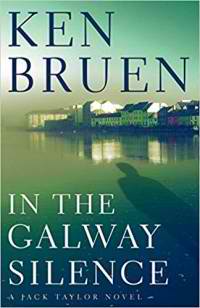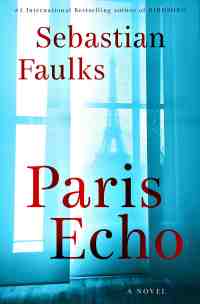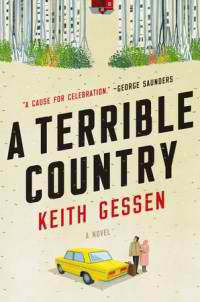In the Galway Silence by Ken Bruen
 Monday, November 12, 2018 at 6:34AM
Monday, November 12, 2018 at 6:34AM 
Published by Grove Atlantic/Mysterious Press on November 13, 2018
Here’s how one of the characters in Ken Bruen’s In the Galway Silence describes Jack Taylor: “Not fully nuts but circling.” The description is apt, but the misfortunes that befall Taylor would make anyone nuts.
Two young and obnoxious men are killed by a man who superglues their mouths shut and pins a sign on their bodies that says “Silence.” Their father wants to hire Jack to bring him the killer. Jack, who seems to have entered into a steady relationship and is happy for the first time in a long time, wants no ugliness to disturb his new state of mind. Being Jack, he nevertheless commences an investigation. More “Silence” killings ensue, the apparent work of a vigilante.
As Jack investigates, he saves a man who jumped into the sea, an act of kindness that he might come to regret. A child molester, a dog killer, an annoying documentary maker, and a black swan all contribute to the plot.
In his personal life, Jack finds himself stuck with childcare duties, the downside of dating a woman who has a child. As series fans will understand, Jack is probably the least qualified person in the universe to provide childcare, with the exception of the various pedophiles the story touches upon. In Jack’s words, concerning the boy he is watching: “I’d have sold his miserable hide for one shot of Jameson.” Series readers might also remember an unfortunate mishap some books ago involving a baby and a window. There’s a reason Jack has little success in relationships.
But he misses his dog, so it is clear that a good heart beats in Jack’s chest. This novel proves Jack’s fundamental decency in multiple ways, not the least in a scene that leaves him briefly thankful for a respite from the bitterness that engulfs him.
As usual, Jack glides through the novel, taking frequent drinks, suppressing or (more often) making snarky comments to people who haven’t learned to leave him alone, and reviewing his growing list of mistakes. He also learns from an ex-wife that his past holds a surprise. But series readers know that anything good in Jack’s life will soon be destroyed and the descending darkness will again seem unbearable. There is no protagonist in fiction more tragic than Jack Taylor.
Jack provides the running commentary on current events, television shows, pop music, and crime novels for which Bruen is famed. I always find something new to read or watch in a Bruen novel, because Bruen understands that good writing isn’t the exclusive province of Booker prize winners. Bruen also incorporates a chess theme into the plot, strategies of the game informing Jack’s investigation in the same blurry way that Jack approaches life. But what Bruen does best is the punch-in-the-gut moment that makes Jack Taylor novels special. In the Galway Silence delivers a stronger punch than most, making it one of the best in the series.
RECOMMENDED



